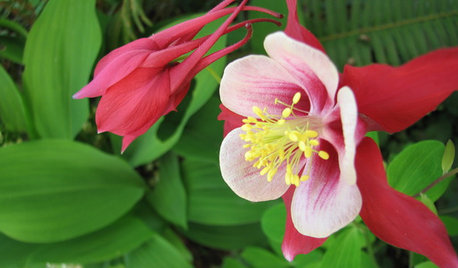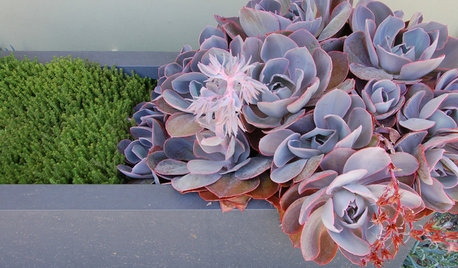Ocean Water and Growing Plants
captaincompostal
16 years ago
Related Stories

HOUSEPLANTS10 Top Plants to Grow Indoors
Brighten a room and clean the air with a houseplant that cascades artfully, stretches toward the ceiling or looks great on a wall
Full Story
EARTH DAYGrow a Beautiful Garden With Ecofriendly Greywater
Reducing home water waste means lower bills and a healthier planet. Here's how to set up a greywater home irrigation system that can help
Full Story
NATIVE PLANTSGreat Native Plant: Grow Wild Quinine for Its Unique Clusters of Blooms
Get connoisseur cred and unique blooms with this uncommon plant. Bonus assets: It’s low maintenance and drought tolerant
Full Story
GARDENING GUIDESGreat Design Plant: Grow Blueberries for Their Fruit and More
Eastern gardeners should consider growing blueberry plants for their delicious fruits, bee-friendly spring blooms and brilliant fall foliage
Full Story
GARDENING GUIDESGrow Your Own Privacy: How to Screen With Plants and Trees
Use living walls to lower your home and garden's exposure while boosting natural beauty in your landscape
Full Story
GARDENING GUIDES7 New Plants to Grow for Beautiful Foliage
Add color, structure and interest to your garden with these recently introduced plants that sport exceptional foliage
Full Story
GARDENING GUIDES8 Plants That Snobs Love to Hate — and You'll Love to Grow
Don't dismiss these common annuals, perennials and shrubs — there are reasons they've been popular for so long
Full Story
CONTAINER GARDENS8 Easy Container Plants to Grow From Seed
Get beautiful blooms and herbs in summer by starting these choice garden picks from seed in spring
Full Story
GARDENING FOR BUTTERFLIESGreat Design Plant: Columbine Grows Happily in Shade and Sun
Its ethereal beauty comes from complex forms and wide-ranging colors, but columbine’s benefits are highly attractive too
Full Story
SUCCULENTSGrow a Garden of Succulents for Easy Beauty
Low-water plants in a wide range of colors, shapes and sizes? Sign us up — and check out our faves here
Full Story






bpgreen
captaincompostalOriginal Author
Related Professionals
Windham Landscape Architects & Landscape Designers · Owings Mills Landscape Architects & Landscape Designers · Alpharetta Landscape Contractors · Canton Landscape Contractors · Dallas Landscape Contractors · Harrisburg Landscape Contractors · Hawthorne Landscape Contractors · Hicksville Landscape Contractors · Hoover Landscape Contractors · Kaneohe Landscape Contractors · Mashpee Landscape Contractors · Dorchester Center Decks, Patios & Outdoor Enclosures · Brooklyn Park Decks, Patios & Outdoor Enclosures · Lancaster Decks, Patios & Outdoor Enclosures · Highland Decks, Patios & Outdoor Enclosuresbpgreen
captaincompostalOriginal Author
pablo_nh
captaincompostalOriginal Author
fertilizersalesman
soil_lover
fertilizersalesman
captaincompostalOriginal Author
bpgreen
fertilizersalesman
captaincompostalOriginal Author
paulns
soil_lover
blutranes
captaincompostalOriginal Author
soil_lover
blutranes
soil_lover
blutranes
soil_lover